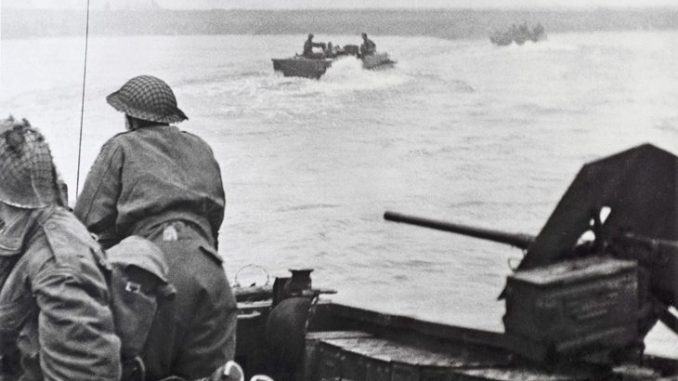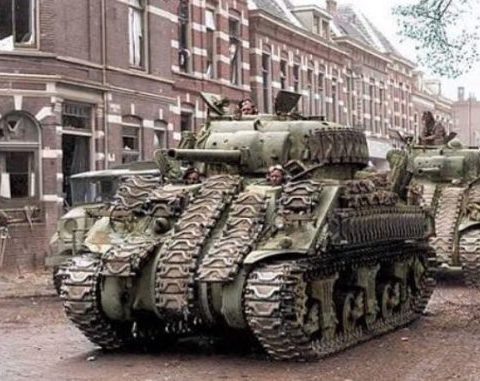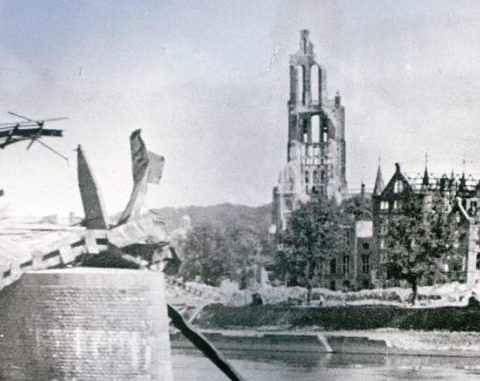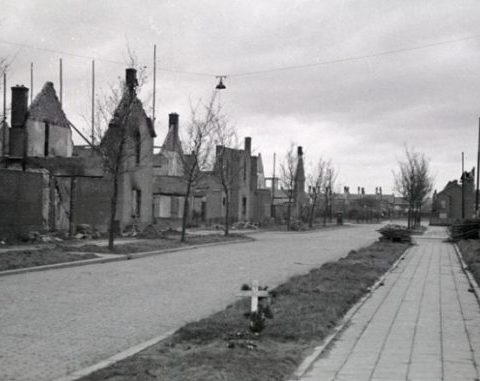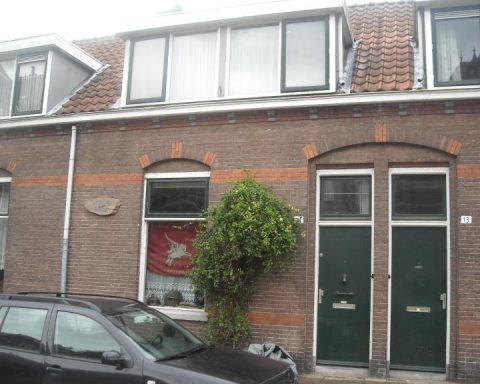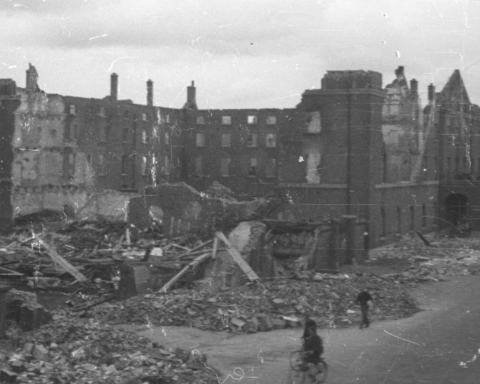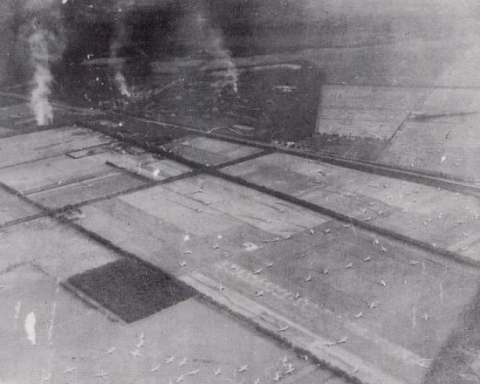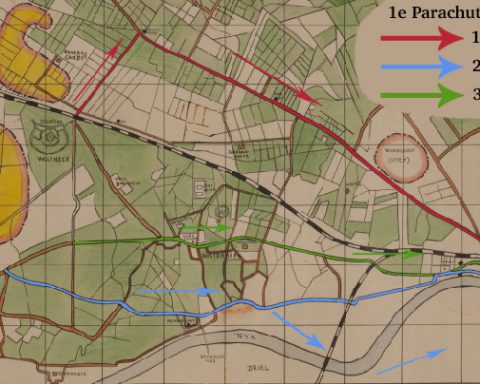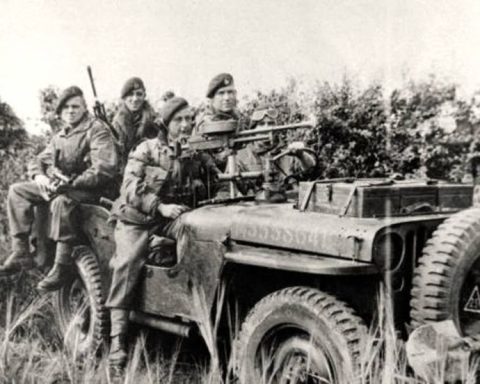When you drive from the Sakharov bridge in the direction of the Velperbroek junction, you cross the site we British troops of the 49th Division crossed the IJssel in the night of April 12-13, 1945.
Seven months after the Battle of Arnhem, a second attempt was made to liberate the city.
The action had been given the name ‘Operation Anger’ by the army command. That name was an adaptation of the earlier plan ‘Operation Quick Anger’. After the area south of the Rhine was conquered by the Allies on April 3, the Allies wanted to use the foot ferry at the Westerbouwing in Oosterbeek to invade Arnhem as soon as possible.
Because of the foot ferry, the road here continued to the water, which was ideal for the British’ amphibious vehicles. The German army command had reached the same conclusion and concentrated most of its defense here.
Canadian General Charles Foulkes, who had now been given command of the troops at Arnhem, therefore decided to approach it differently. Between Westervoort and the Enka factory east of Arnhem, there was also a foot ferry with a road to the water.
Then there.
Because it was unclear how many Germans there were in Arnhem to defend the city, general Foulkes took a very cautious approach. It was decided to attack in two parts.
First, a sturdy bridgehead had to be established across the IJssel. Only when the majority of the troops and tanks were on the other side, about 10,000 men, the division would further advance towards the city.
Artillery bombardment
The attack was preceded by a massive artillery bombardment of the city. It was one of the biggest artillery barrages the 49th division performed during World War II.
Because the city had been evacuated, the British did not have to consider the civilian population. Any person who fell would be a soldier. And so the soldiers had a blast.
A single artillery battery of eight guns could fire over 600 shells at the city in ten minutes. The artillery bombardment on Arnhem lasted more than two hours. In addition, planes were also used to target the Germans present in the city.
The damage from the artillery bombardment in the city was immense. That damage was in addition to the bombing of the Rhine Bridge after the Battle of Arnhem in October 1944.
After a few moments of delay because insufficient ‘Buffaloes’ had arrived at Westervoort, the attack on Arnhem started on April 12, 1945 at 7:40 PM. Not in Westervoort at the banks of the IJssel, but near Oosterbeek on southern bank of the Rhine.
Here, a small British force was gathered for a diversionary attack with the purpose of misleading the Germans. Tanks and cannons were fired at the German positions from the south bank.
The firepower of the Germans shooting back showed that the Germans indeed expected the attack on Arnhem at this location.
Crossing
Around 11.15 pm the first Canadian ‘Buffaloes’ made the crossing over the IJssel near Westervoort.
The first Allied troops immediately advanced to Fort Westervoort to eliminate the German resistance there. The fort had already been bombed by British planes that day and there was not much opposition.
To make the crossing as smooth as possible, the Allies had come up with a nice surprise. In the days before the attack on Arnhem, a bailey bridge had already been assembled at Doornenburg.
After Fort Westervoort was conquered and about 2,000 British had crossed the IJssel, the Bailey Bridge near Westervoort was sailed to its place in the early morning of April 13. Now large numbers of tanks and armored vehicles were immediately able to cross the river to support the infantry.
In the meantime, advancing British shock troops had discovered that the Enka factory was more heavily defended than anticipated.
The factory was mainly defended by troops of the SS division Landstorm: Dutch volunteers employed by the SS. The Dutch SS men had nothing to lose. Their post-war prospects were not so good, which is why they fought hard.
The Dutch SS men were among the last German troops in Europe to lay down their weapons at the end of the war. Although the war in the Netherlands ended on May 6, 1945, the SS men did not surrender until May 10. And even then that did not happen voluntarily. Only after a shootout with members of the resistance and domestic forces did the SS men surrender.
On April 13, 1945, the Dutch SS men firmly controlled the Enka factory. The factory had been provisionally transformed into a fortress.
Despite the deployment of tanks, it took until the end of the day for the Polar Bears to fully control the factory. The Dutch SS men retreated to the city center.
The greatest German resistance seemed to have broken with the capture of the Enka factory, but there was no question of rapid advances to the center of the city.
The rubble and ruins were ideal places for snipers. In total there were nearly 200 Canadian and British casualties in the “Second Battle of Arnhem”: 62 killed and 134 wounded. Most of those victims fell because of snipers.
At the end of April 13, 1945, the British were on the outskirts of Arnhem. The next day the city would finally be captured.
The liberation of Arnhem:
Part 1: After the Battle of Arnhem
Part 2: The Liberation of Arnhem South
Part 3: The 2nd Battle of Arnhem
Part 4: Liberation of a ruined city
Part 5: Return in a lifeless city

